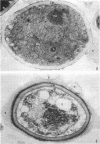Abstract
A study was made on the in vitro action of the antimycotic miconazole on Candida albicans yeast cells with scanning electron microscopy, and the effects were compared with those seen on the yeast cells by means of transmission electron microscopy. It was found that cells exposed to fungistatic and minimal fungicidal doses of miconazole (10−7 M and 10−6 M) presented rough surfaces and had multiple, desoriented buds and bud scars. Whereas in control cultures the cells were well separated, the treated ones formed small clusters of interconnected cells. After exposure to a fungicidal concentration (10−4 M) of the drug, most of the remaining cells showed smooth surfaces and were covered with numerous vesicular structures probably representing cytoplasmic remnants derived from broken cells. This has been substantiated by the presence of abundant fragments of cell walls and confirmed by examination of similarly treated cultures in the transmission electron microscope. Moreover, the cells with an apparently intact surface when examined with scanning electron microscopy were shown with transmission electron microscopical examination to be completely necrotic inside.
Full text
PDF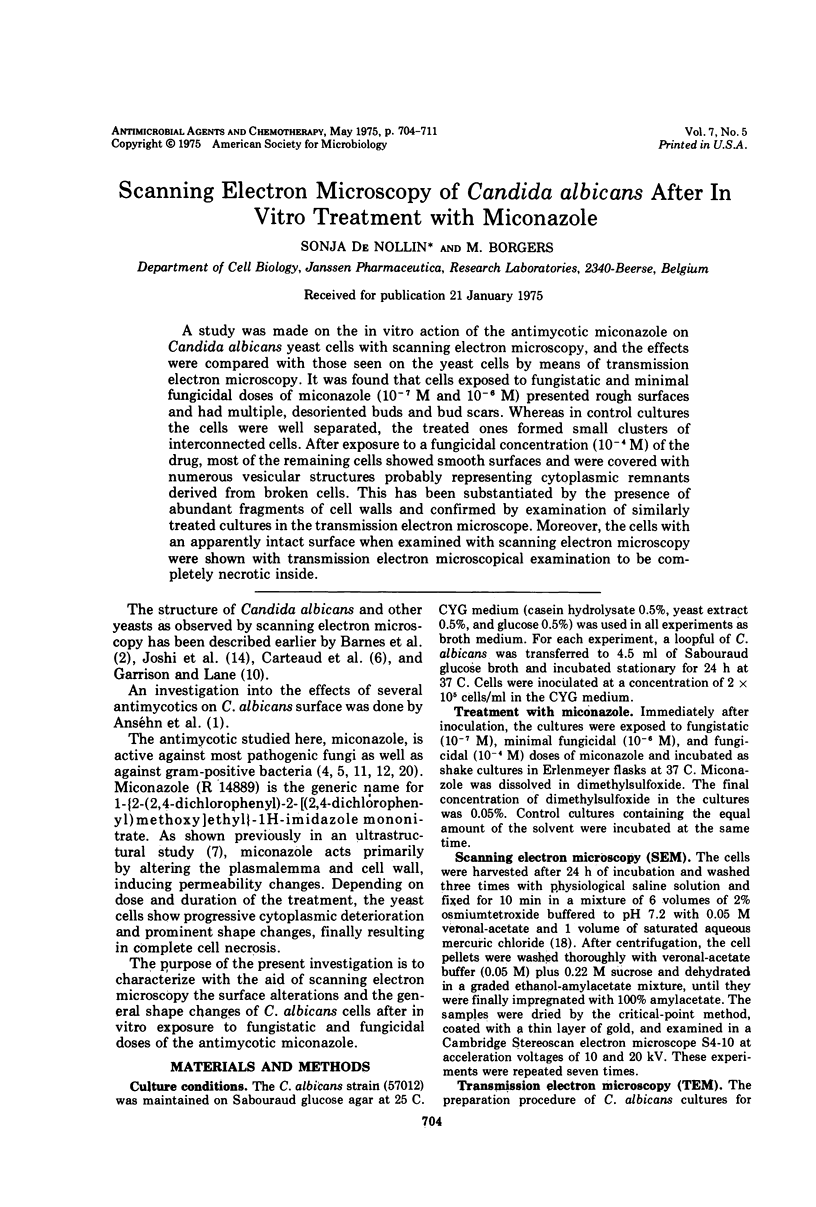
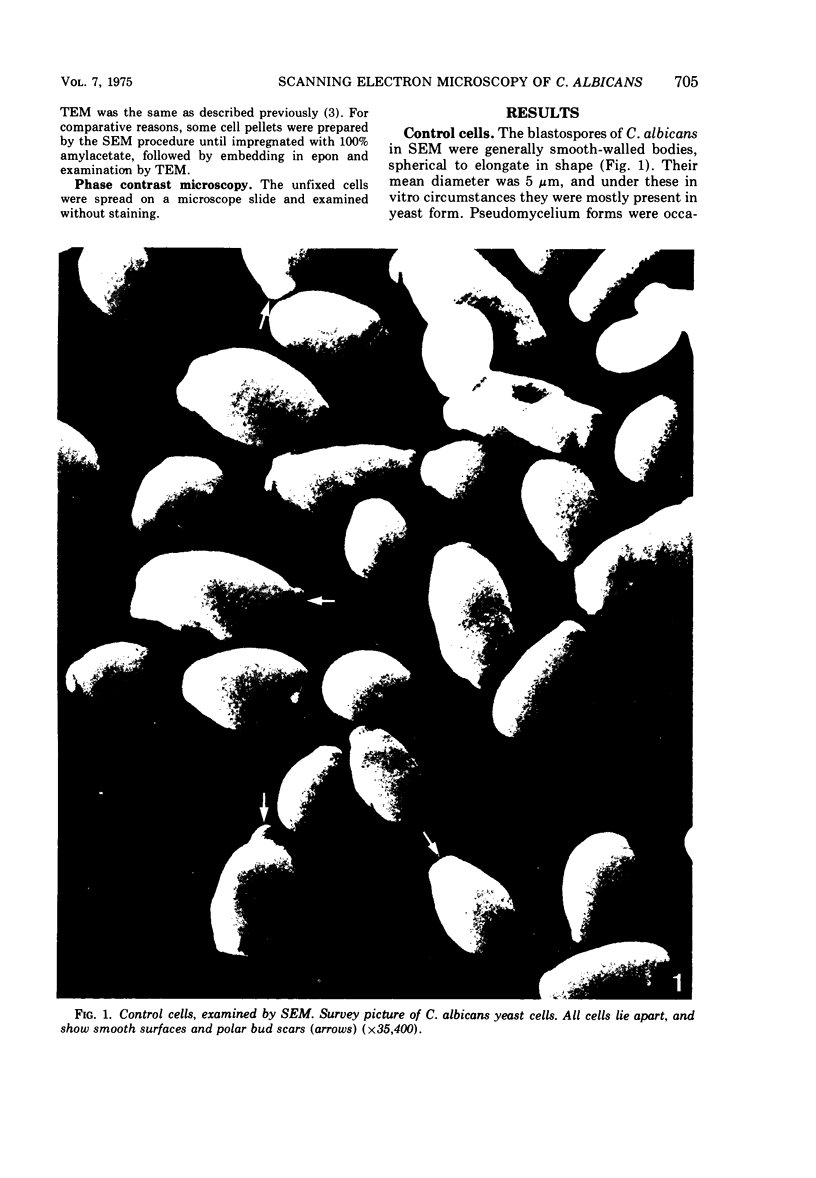
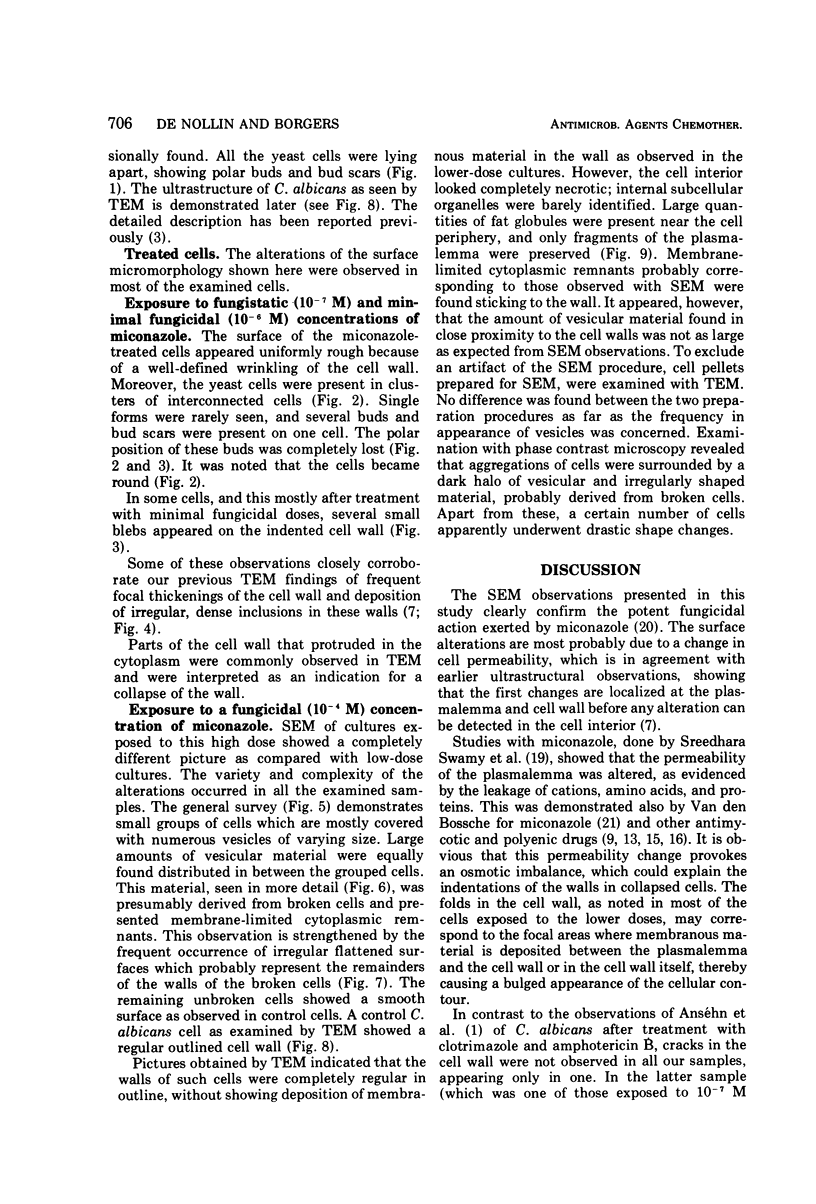
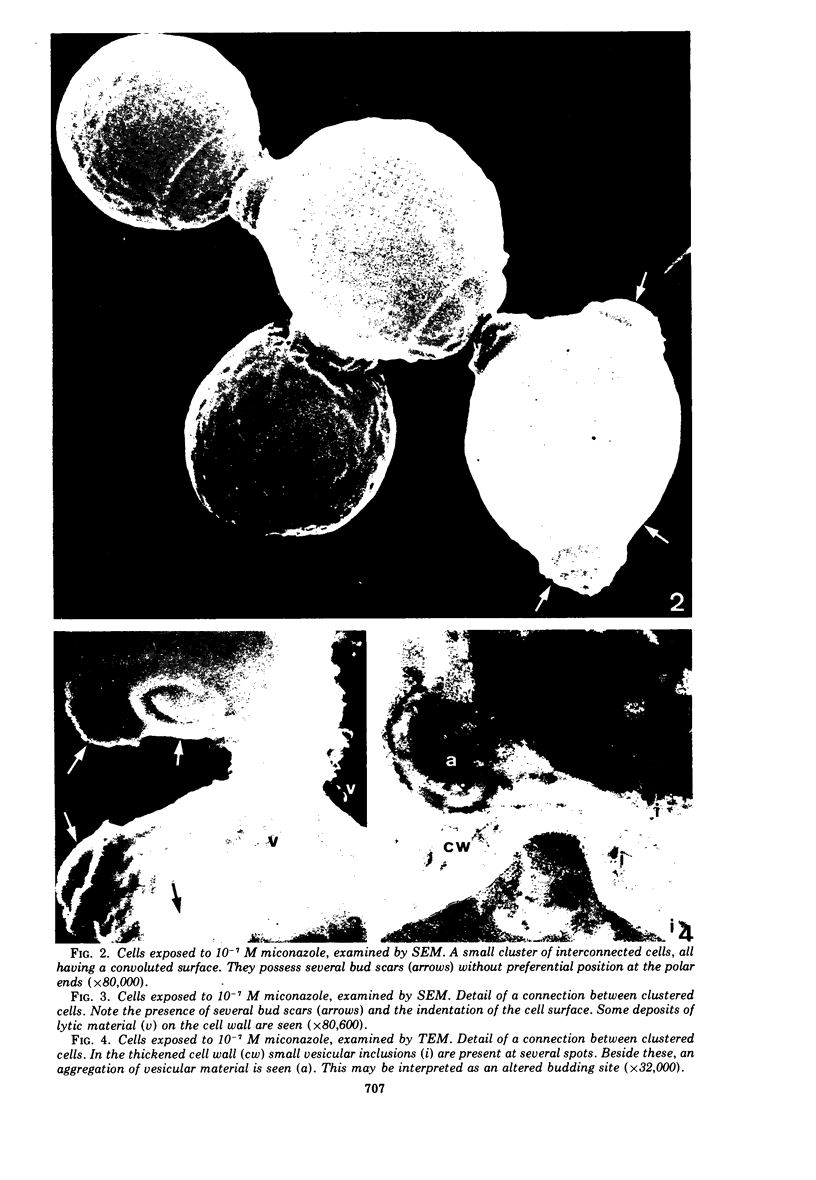
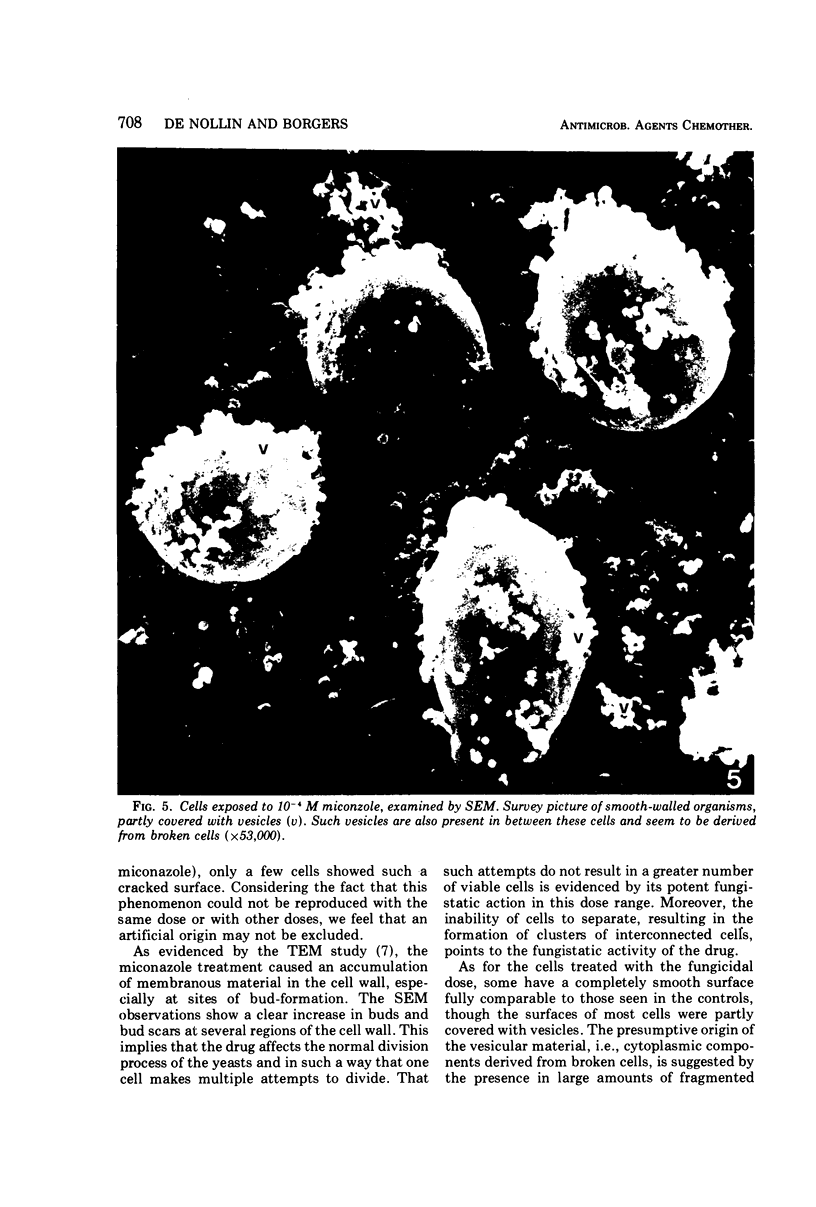
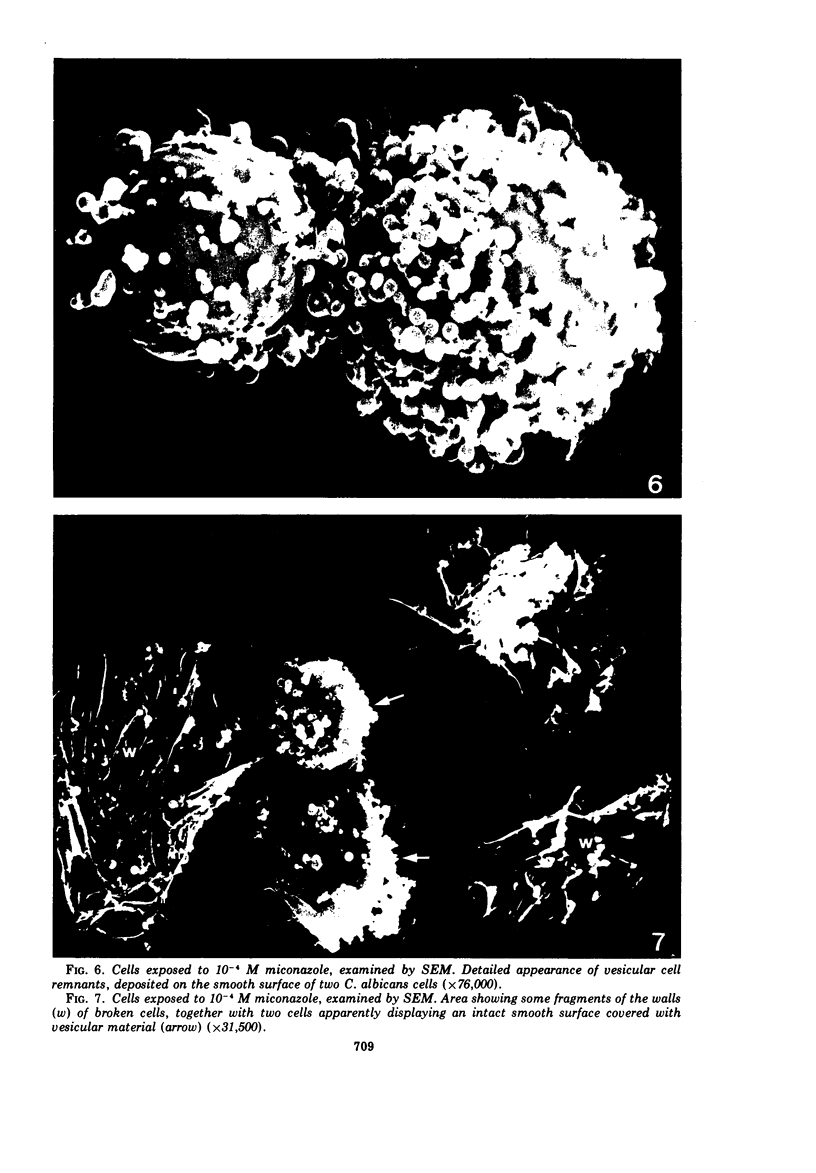

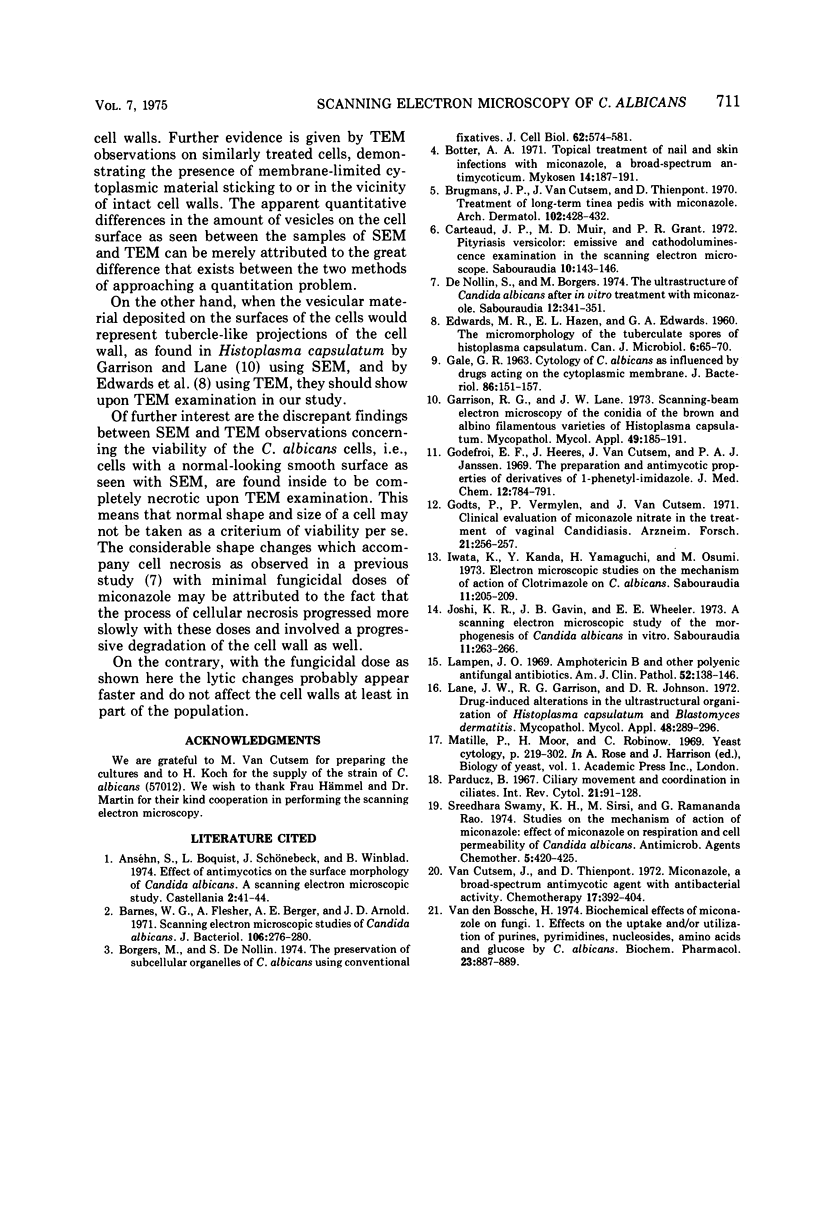
Images in this article
Selected References
These references are in PubMed. This may not be the complete list of references from this article.
- Barnes W. G., Flesher A., Berger A. E., Arnold J. D. Scanning electron microscopic studies of Candida albicans. J Bacteriol. 1971 Apr;106(1):276–280. doi: 10.1128/jb.106.1.276-280.1971. [DOI] [PMC free article] [PubMed] [Google Scholar]
- Borgers M., De Nollin S. The preservation of subcellular organelles of Candida albicans with conventional fixatives. J Cell Biol. 1974 Aug;62(2):574–581. doi: 10.1083/jcb.62.2.574. [DOI] [PMC free article] [PubMed] [Google Scholar]
- Botter A. A. Topical treatment of nail and skin infections with miconazole, a new broad-spectrum antimycotic. Mykosen. 1971 Apr 1;14(4):187–191. doi: 10.1111/j.1439-0507.1971.tb03028.x. [DOI] [PubMed] [Google Scholar]
- Brugmans J. P., Van Cutsem J. M., Thienpont D. C. Treatment of long-term tinea pedis with miconazole. Double-blind clinical evaluation. Arch Dermatol. 1970 Oct;102(4):428–432. [PubMed] [Google Scholar]
- Carteaud J. P., Muir M. D., Grant P. R. Pityriasis versicolor: emissive and cathodoluminescence examination in the scanning electron microscope. Sabouraudia. 1972 Jul;10(2):143–146. doi: 10.1080/00362177285190281. [DOI] [PubMed] [Google Scholar]
- De Nollin S., Borgers M. The ultrastructure of Candida albicans after in vitro treatment with miconazole. Sabouraudia. 1974 Nov;12(3):341–351. [PubMed] [Google Scholar]
- EDWARDS M. R., HAZEN E. L., EDWARDS G. A. The micromorphology of the tuberculate spores of Histoplasma capsulatum. Can J Microbiol. 1960 Feb;6:65–70. doi: 10.1139/m60-009. [DOI] [PubMed] [Google Scholar]
- GALE G. R. CYTOLOGY OF CANDIDA ALBICANS AS INFLUENCED BY DRUGS ACTING ON THE CYTOPLASMIC MEMBRANE. J Bacteriol. 1963 Jul;86:151–157. doi: 10.1128/jb.86.1.151-157.1963. [DOI] [PMC free article] [PubMed] [Google Scholar]
- Garrison R. G., Lane J. W. Scanning-beam electron microscopy of the conidia of the brown and albino filamentous varieties of Histoplasma capsulatum. Mycopathol Mycol Appl. 1973 Mar 15;49(2):185–191. doi: 10.1007/BF02050863. [DOI] [PubMed] [Google Scholar]
- Godefroi E. F., Heeres J., Van Cutsem J., Janssen P. A. The preparation and antimycotic properties of derivatives of 1-phenethylimidazole. J Med Chem. 1969 Sep;12(5):784–791. doi: 10.1021/jm00305a014. [DOI] [PubMed] [Google Scholar]
- Iwata K., Kanda Y., Yamaguchi H., Osumi M. Electron microscopic studies on the mechanism of action of clotrimazole on Candida albicans. Sabouraudia. 1973 Nov;11(3):205–209. doi: 10.1080/00362177385190441. [DOI] [PubMed] [Google Scholar]
- Joshi K. R., Gavin J. B., Wheeler E. E. A scanning electron microscopic study of the morphogenesis of Candida albicans in vitro. Sabouraudia. 1973 Nov;11(3):263–266. doi: 10.1080/00362177385190531. [DOI] [PubMed] [Google Scholar]
- Lampen J. O. Amphotericin B and other polyenic antifungal antibiotics. Am J Clin Pathol. 1969 Aug;52(2):138–146. doi: 10.1093/ajcp/52.2.138. [DOI] [PubMed] [Google Scholar]
- Lane J. W., Garrison R. G., Johnson D. R. Drug-induced alterations in the ultrastructural organization of Histoplasma capsulatum and Blastomyces dermatitidis. Mycopathol Mycol Appl. 1972 Dec 15;48(4):289–296. doi: 10.1007/BF02052633. [DOI] [PubMed] [Google Scholar]
- Párducz B. Ciliary movement and coordination in ciliates. Int Rev Cytol. 1967;21:91–128. doi: 10.1016/s0074-7696(08)60812-8. [DOI] [PubMed] [Google Scholar]
- Sreedhara Swamy K. H., Sirsi M., Ramananda Rao G. R. Studies on the mechanism of action of miconazole: effect of miconazole on respiration and cell permeability of Candida albicans. Antimicrob Agents Chemother. 1974 Apr;5(4):420–425. doi: 10.1128/aac.5.4.420. [DOI] [PMC free article] [PubMed] [Google Scholar]
- Van Cutsem J. M., Thienpont D. Miconazole, a broad-spectrum antimycotic agent with antibacterial activity. Chemotherapy. 1972;17(6):392–404. doi: 10.1159/000220875. [DOI] [PubMed] [Google Scholar]
- Van den Bossche H. Biochemical effects of miconazole on fungi. I. Effects on the uptake and or utilization of purines, pyrimidines, nucleosides, amino acids and glucose by Candida albicans. Biochem Pharmacol. 1974 Feb 15;23(4):887–899. doi: 10.1016/0006-2952(74)90220-2. [DOI] [PubMed] [Google Scholar]







